An indoor or outdoor cat?
While many of us grew up with cats roaming freely about our streets, we now know that this is far from an ideal life for our cats. Cats who roam freely live much shorter lives than those who are kept indoors/or in a secure enclosure or garden due to traffic accidents, contagious diseases (many of which can be fatal, such as FIV and Leukaemia), painful wounds or death from attacks by other cats and animals, poisons, traps, pet theft and inhumane treatment by cruel people. As predators, cats also injure and kill a significant number of wild animals when left to roam.
There are now many ways to create an outside space for your cat to safely enjoy. You can now buy affordable enclosures/cat cabanas, or netting to easily secure your garden, from retailers such as catnets.com.au. Companies such as oscillot make paddles that are easily mounted on top of your fences and immediately stop cats getting out (or other cats getting into) your yard. There are many groups on facebook who share ideas about how to secure the smallest spaces (such as trampolines or verandas) to large properties. Just search for cat enclosure ideas, or ask Deedlebugs cat rescue for more information!
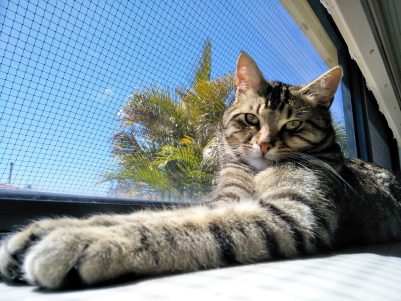
First few days at home
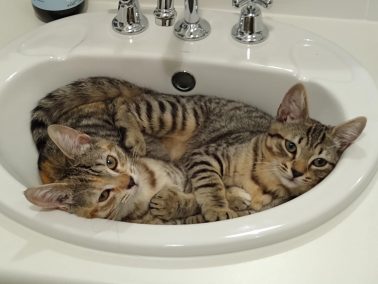
Your kitten may act timid and apprehensive when they first arrive home. Please try not to worry, they are experiencing a new environment for the first time and are missing their littermates and mother. Start kitty off with its own confined, safe space (such as a bathroom or a bedroom). Provide them with a nest-like bed (a carrier or cardboard box with a blanket covering all but the entrance is ideal). This will give them a ‘safe’ space from which they will feel brave enough to explore their new surroundings. Make sure they have fresh water, food and cat tree/toys for enrichment. Once they are used to this space, and becoming more confident, slowly increase their access to the house. For example, if they are in a bathroom, allow them to start exploring the hallway, then additional rooms. Avoid places where there are lots of ‘unders’ where they can hide and where it is difficult to retrieve them (beds, fridges, couches etc). Other family pets should be introduced slowly, individually, and under close supervision (more info is given below on introductions).
What to feed your kitten
Your kitten has specific nutritional requirements that differ from adult cats. They should be fed a complete and balanced diet that caters to their specific life stage requirements. We recommend premium brand kitten biscuits, made from high quality ingredients, that will provide all the nourishment your kitten needs without the need for any supplementation. We will advise you of the food we have fed your kitten while in foster care.
To introduce variety, we feed cat meat 2-3 times a day to our kittens. We would recommend you do the same, and transition them slowly if you move to just premium biscuits. Two or three main meals of cat meat, spread throughout the day, with kitten biscuits available at all times, is best. Be sure to always have fresh water freely available (cats will not drink from water they think is stagnant).
Any changes to the diet should be made gradually, transitioning to the new food slowly over a period of days. Sudden diet changes are a common cause of diarrhoea in kittens.

Bedtime
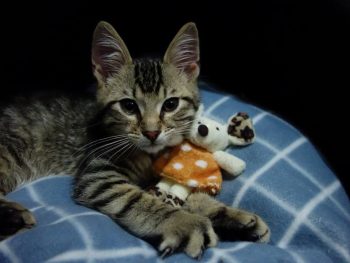
Be sure to give your kitten a warm comfortable place to sleep, this could be its own bed, basket or even box with some soft toys and blankets. Your kitten may miss their littermates and cry for the first couple of nights, so it’s important to keep them warm and provide comfort. You can try playing heartbeat music at a low-level, or placing a heartbeat toy with them to assist. If the crying persists, you may want to purchase a feliway adaptor and diffuser (available from vets and pet shops), which releases a pheromone similar to mother cats and calms both cats and kittens. There are also dog/cats snugglies with a heartbeat and heatpad function that can help. Please just ask us for advice and we will be pleased to help!
We know that you may prefer that your kitten sleeps in your bedroom. This is great, but try keep them at ground level until they are older. Remember, he or she is still just a baby and may find it difficult navigating around the house, and can fall off the bed and injure themselves.
Toilet time
Your kitten should be toilet trained by the time they go to their forever home, however, accidents can happen. Kittens just love to poo so be sure to take them to the litter tray after sleeping, eating, and last thing before bed. Praise your kitten for using the litter box. NEVER punish your kitten after accidents. A kitten is too young to connect the punishment with the accident, and can instead develop fear towards an owner.
Most types of litter are fine to use with kittens. However, avoid using crystal litter as young kittens may try to eat it.

Tips for Socialisation
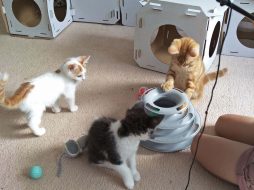
Peak socialisation time in your kitten’s life is before 14 weeks of age. By 7-8 weeks old, your kitten has developed good paw and eye coordination, and social play develops between 6-12 weeks. Expose your kitten to new lots of experiences so they become accustomed to many things from an early age. During this early time, kittens are often receptive to learning tricks – food rewards work best when training kittens. Fearful play and fighting behaviour can start after 14 weeks, so be sure to handle your kitten as much as possible before then.
Children and kittens
Before children meet their new kitten, explain that the kitten is a baby, and must be handled with care. Children should sit down when they handle the kitten to prevent kittens being dropped, or kittens scratching out of fear. Show the children how to pet the kitten gently, and explain that kittens have sharp claws that they will use if they are frightened or feel unsafe. Get the children to use toys when playing with the kittens so they get used to how the kittens move and act. Explain that they should never pull a cat’s tail or pick them up by the tail, as this will seriously injure the cat.
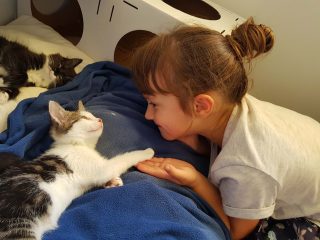
If you have other animals in the house,
ensure you have slow and positive introductions
Some tips:
- Introduce the scents of each animal to other by swapping blankets and toys
- Feed animals on separate sides of a door, so they associate one another’s smells with food
- Include treats of special food (such as roast chicken) with meets between the animals, so again they have positive associations.
- Ensure that each animal has its own safe space in the house. I.e. if an older cat spends a lot of time in the main bedroom, don’t initially put the new kitten in there. The older cat will see this as an invasion and colonisation of their space.
- Ensure all animals get lots of affection, so established animals don’t see the new animal as taking affection away from them.
- Ensure that each animal has a safe ‘highway’ of travel into and out of rooms, so that confrontation is easily avoided.
- Ensure that you have enough litterboxes. A rough guide is 1 per cat plus an additional one. Ensure litterboxes are not placed in an area where cats may feel cornered while toileting.
- Ensure you have multiple water and food bowls, so no one animal can guard resources from others.

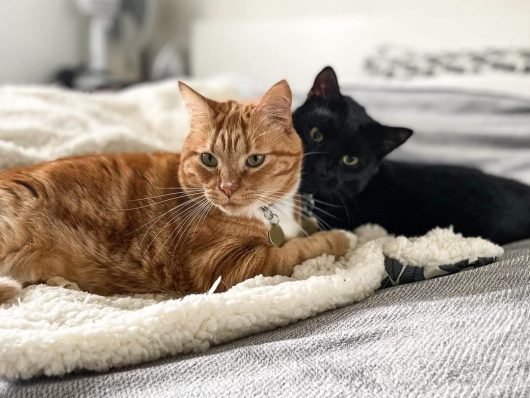
We are always happy to offer any additional advice
should you need it.
Enjoy this wonderful time with your new fur-baby!

